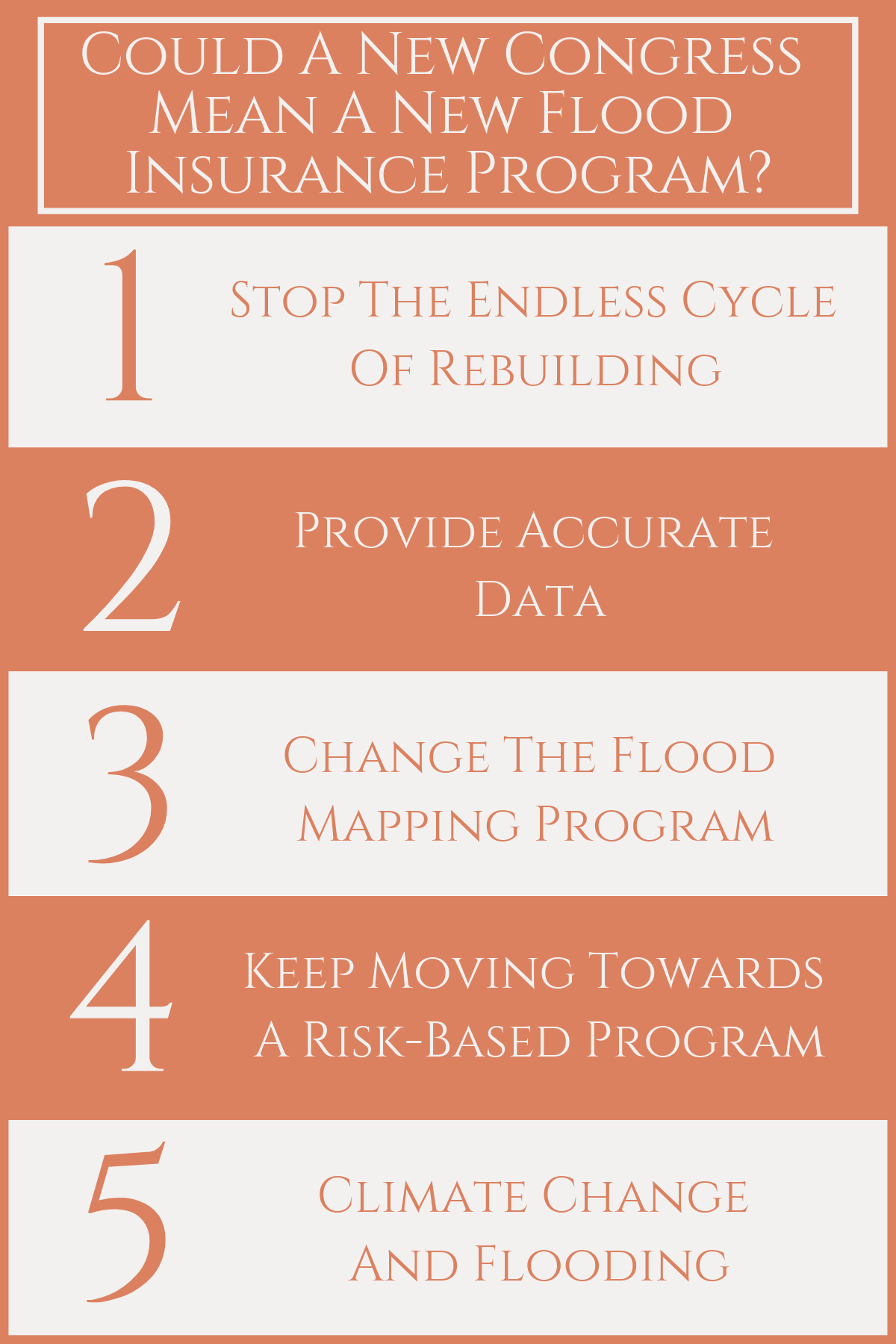05 Feb Could A New Congress Mean A New Flood Insurance Program?

855-368-5502
Could A New Congress Mean A New Flood Insurance Program?
By: Adam M. Matheny
Here we are, the 116th Congress is now in session and split between a Republican Senate and a Democratic House. The one thing we can all count on is that our government is still heavily divided along party lines. However, serious reform of the National Flood Insurance Program or NFIP needs to be one area in which both parties need to get together.
Floods don’t pick on red states or blue states; they happen everywhere regardless of politics. They also cause a significant financial strain on all Americans, not just those in the affected area. The current NFIP expires on May 31st, 2019 and after no less than ten attempts to bring reform to the program before Congress, it is time for the 116th Congress to stop dithering around and make real change happen. With continued global warming threaten more floods and devastation there is no time to wait, NFIP reform should be a priority.
When the prospect of more frequent and devastating flooding, Congress needs to step up to the plate take the necessary steps to help with mitigation and avoidance.
Stop the Endless Cycles of Flooding and Rebuilding
The best way to put an end to the what seems to be an endless cycle of flood damage followed by rebuilding in flood-prone areas is to provide homeowners with a buyout option that helps them move outside of the flood zone. The current NFIP program actually encourages repetitive rebuilding rather than relocation. Records indicate that to date the NFIP has paid to rebuild over 30,000 homes an average of five times following severe flooding.

Provide Accurate Flood Risk and NFIP Data
Far too many home buyers and renters are given no idea that the property they are interested in sits in a flood zone with a high risk of flooding. There are several issues:
- 21 States have no laws requiring disclosure
- 29 States have a confusing mixture of state and local laws
- FEMA does not make the data it or the NFIP collects on flood zones available to the public
This lack of information makes it impossible for anyone to make an informed decision. Which puts everyone, including the NFIP, at more significant risk.
- Part of the recommended NFIP reforms would require greater disclosure of all flood risk data to provide for greater transparency. To participate in the NFIP, a state would need to enact laws that required full disclosure of the following flood risk information:
- If the home has ever suffered flood damage and the cost of any repairs.
- If the home is located in either a 100 or 500-year flood zone.
- If the previous owner or current seller had ever been the recipient of federal disaster aid that would make it necessary for the new owner to purchase flood insurance on the property and maintain it.
- A requirement that FEMA establishes a database that is open to the public. The database should include information on the number of properties repeatedly flooded and rebuilt, the number of flood claims, and whether communities are following the laws regarding all local building and zoning codes as required by the NFIP.
- A requirement that FEMA be able to provide a property owner the flood and claim history of their property and the need to purchase flood insurance due to past owner’s acceptance of federal disaster aid.
In 2017 HR 2874 the “21st Century Flood Reform Act” passed in the House of Representatives. But the new Congress will have to start again from ground zero to create a bill that includes the above.
Changes Need to Be Made to the Current Flood Mapping Program
FEMA is responsible for producing the maps of flood-prone areas such as floodplains, areas subject to storm surge, and so forth. Everyone from contractors and developers to the Federal government relies on the information these maps contain. Bear in mind that FEMA building and land use requirement only apply to those areas considered to be in 100-year flood zones.
The current maps, according to a 2017 investigation conducted by Homeland Security found them to be significantly out of date, putting many communities at risk. To make things worse, these maps do not take into consideration the increasing risks of flooding we face in the future. Many areas that are considered safe now would likely be in high-risk flood zones if the mapping included this factor. It is up to Congress to instruct FEMA to keep their maps up to date, accurate, and that they also contain details on future changes that might increase flood risk.
Keep Moving Towards a Risk-Based Program
While there is some fear that a risk-based program would force low and middle-class homeowners to be forced out of the market due to high premiums, this does not have to be the case. In fact, with this type of program and the proper assistance, it would be possible for people to reach a place where they are able to reduce or eliminate their susceptibility to future flooding.
Using a means-based program could help both low and middle-class people to obtain NFIP coverage and maintain it while also having access to better mitigation options such as:
- Offer those NFIP policyholders who qualify a voluntary buyout option if their home suffers significant flood damage instead of an insurance payout.
- Offer those NFIP policyholders who qualify for Increased Cost of Compliance assistance more financial assistance to cover the cost of floodproofing, relocation, or increasing elevation.
- Offer those NFIP policyholders who qualify access to low-interest loans and grants to help pay for flood mitigation projects.
Climate Change and Flooding
It is a fact that climate change is and will continue to add to the vulnerability of an already fragile NFIP program. Sea levels will continue to rise, heavier rains that last longer will become more the norm, coastal communities that were once high enough to avoid flooding will lose their advantage, and more.
You only have to look at the catastrophic costs of the past two hurricane seasons (approximately $20 billion just to the NFIP alone) to see why reform is so important and why the 116th Congress must work together across party lines to protect those who live in flood-prone areas both now and in the future.

